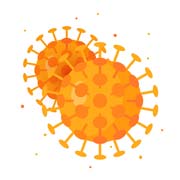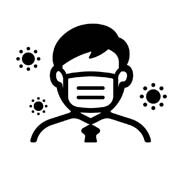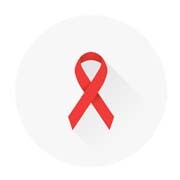- Home/
- World Cancer Day 2024: Understanding The Difference Between Chemotherapy And Radiation Therapy
World Cancer Day 2024: Understanding The Difference Between Chemotherapy And Radiation Therapy

World Cancer Day is observed on February 4 every year. The day aims to promote awareness about cancer. Cancer is a large group of diseases that can affect any organ or tissue of the body. It refers to the abnormal growth of cells that divide uncontrollably. The primary modalities of cancer treatment include radiation therapy, chemotherapy, surgery, hormonal therapy, targeted therapy, and immunotherapy. Increasingly, cancer treatment is moving towards multimodality care.
Chemotherapy and radiotherapy represent two distinct types of cancer treatment. However, since both have a similar suffix and are used for cancer management, patients and the lay public can often get confused with these similar-appearing terms.
Chemotherapy: Systemic medication
Chemotherapy involves administering medications intravenously or orally. The aim is to circulate the medicine throughout the body, thereby targeting cancer cells. This is also called systemic treatment because it can reach cancer cells locally and at distant sites.
Radiation Therapy: Targeted treatment
Radiation treatment is a very focused treatment of the local site. It works by damaging the DNA of cancer cells. Radiation therapy uses high-energy rays or particles carefully targeted at the tumor or other sites at risk. It is a targeted, localized procedure that primarily targets the region of the body where the radiation is administered.
Depending on the tumor site, Radiation therapy can be given alone, in combination with surgery or chemotherapy, or for palliative treatment in advanced cases. Nearly 60%-70% of all cancer cases would require radiation therapy at some point in their overall treatment course.
Treatment duration and techniques
Chemotherapy is typically given in cycles (e.g., a dose repeated every two weeks shall be a two-weekly cycle). A particular regime of chemotherapy can last for 2-6 cycles. A typical infusion cycle of chemotherapy can be a single drug or a combination of drugs.
Contrary to this, radiation therapy is usually given daily (except on weekends). Typical schedules of radiation vary from 3-6 weeks. However, SRS (stereotactic radiosurgery) and SBRT (stereotactic body radiotherapy) can complete the entire treatment in 1 to 7 days. The latter techniques can be used only in a select group of patients, including patients with very early or localized disease.
Advantages and side effects
Both treatments have their own advantages and side effect profile. Radiation therapy is often used to treat localized cancers curatively and can also be used to shrink tumors before surgery. It is also used after surgery in many cases, to take care of invisible microscopic disease in the tumour bed or its vicinity. As a side effect, it can cause skin irritation, fatigue, and changes in skin color. Of note, its effects (or side effects) are minimal beyond the area where it is given. In addition, the side effects would depend on the area being treated and the organs next to that area. Modern-day radiation therapy has become highly conformal (tightly abutting the target area) and uses techniques such as CT scan-based image guidance just before the delivery of the radiation beam.
Chemotherapy can be used to treat a wide range of cancers. It is also commonly used to reduce the size of tumors to make them operable or suitable for curative treatment. It is often combined with other treatments, such as surgery or radiation therapy. However, it can also cause side effects such as hair loss, nausea, and fatigue to varying extent, depending on the intensity of treatment and the type of drugs.
Determining the best course of treatment
The type of cancer, its stage, and the patient's unique characteristics will determine whether radiation therapy, chemotherapy, surgery, or a combination of these is best for the given situation. It is essential to consult with a qualified medical professional to determine the best course of treatment for each case. Most hospitals have established tumour boards where the sequence and pattern of treatment for a particular disease site and patient are decided jointly by a team.
Radiation therapy and chemotherapy are effective modalities in cancer management. However, their administration and their use are best guided by a qualified oncology team. Of note, advances in technology have significantly reduced the side effects of both radiation therapy and chemotherapy, making the management of cancer much more comfortable for the doctor as well as the patient.
(Dr Anusheel Munshi, Head of Department - Radiation Oncology, Manipal Hospital, Dwarka)
Disclaimer: The opinions expressed within this article are the personal opinions of the author. NDTV is not responsible for the accuracy, completeness, suitability, or validity of any information in this article. All information is provided on an as-is basis. The information, facts, or opinions appearing in the article do not reflect the views of NDTV and NDTV does not assume any responsibility or liability for the same.
also read
Tech Millionaire Bryan Johnson Reveals How He Reversed His Hair Loss, Shares Tactics
Edited by Ritu SinghBlood Plasma Therapy Doesn't Help Seriously Ill COVID-19 Patients: Study
Press Trust of IndiaPlasma Therapy Dropped As Treatment For COVID-19 By Government Task Force
Reported by Parimal Kumar, Edited by Vaibhav Tiwari
Watch
How Will Plasma Therapy Save Lives?
- Based on the concept of passive immunity
- Plasma contains components like blood cells, antibodies, protein, hormones etc. Infusing antibodies from a recovered patient will activate immunity in the patients
- Antibodies from donor plasma will be retained in blood for 2-3 weeks
Plasma Therapy For COVID Patients: Don’ts

Not recommended for pregnant & lactating women

Should be avoided in patients with immunoglobulin a deficiency

Should be avoided in patients with immunoglobulin allergy

Active infections & tuberculosis should be ruled out before use

Donor should not be suffering from H.I.V or hepatitis or renal problems










